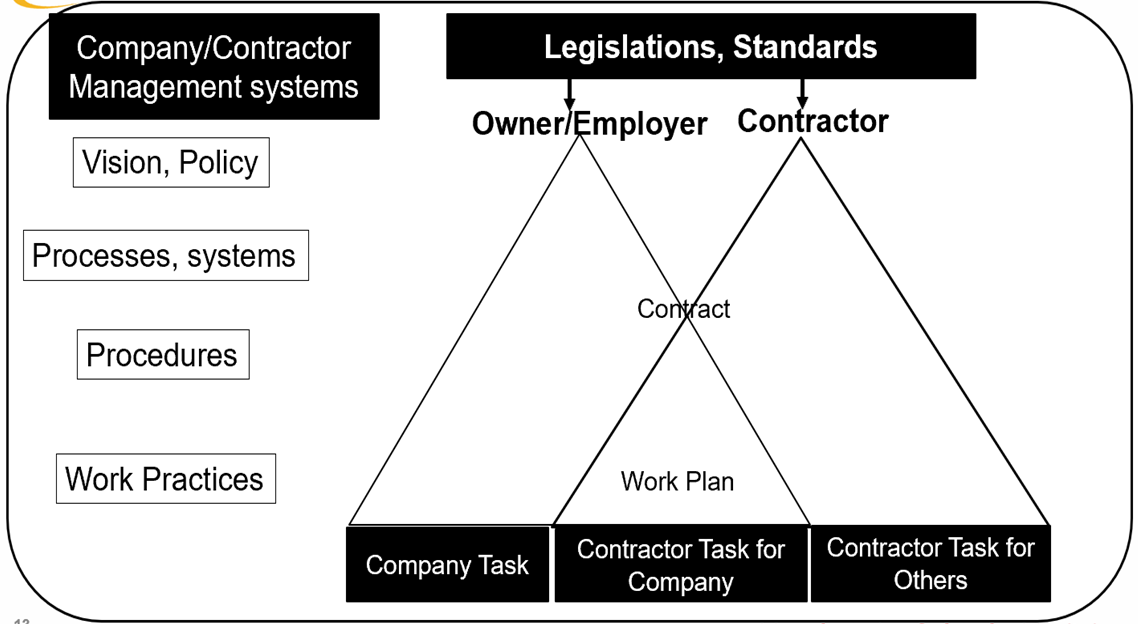Know Your Role – Contractor Health and Safety
Know Your Role – Contractor Health and Safety
Posted on February 11, 2022
By Umukoro Ewhrudjakpor, CRSP; CMIOSH
Contractors are employed by manufacturing organizations for a wide range of activities including maintenance, installation works, construction, cleaning, supply of raw materials and equipment, delivery of finished products and more. Organizations that engage the services of contractors may have well-developed safety standards within their own operations towards ensuring that their employees do not get exposed to unnecessary risks in the workplace.
Then comes the question: is it also required that contractors should operate under the same safety standards their temporary employer has put in place? The basic answer is an absolute yes – there could be negative consequences for employers that are unable to show due diligence if contractors are allowed to carry out potentially high-risk tasks at their facility or projects without ensuring that adequate safety controls or measures have been put in place. “Figure 1” shows contractors and owners/employers interface activities and its inherent risk.

Fig1. Employer/Owner and Contractor Interface
Legal Requirements
Section 7.4(5)(g) of the Manitoba Workplace Safety and Health Act and Regulation requires, “a statement of the procedure to be followed to protect safety and health in the workplace when another employer or self-employed person is involved in work at the workplace that include:
- criteria for evaluating and selecting employer and self-employed persons to be involved in work at the workplace, and
- procedure for regularly monitoring employers and self-employed persons involved in work at the workplace.”
Section 127 of the Canada Labor Code Part 11 states, “everyone who undertakes, or has the authority, to direct how another person does work or performs a task is under a legal duty to take reasonable steps to prevent bodily harm to that person, or any other person, arising from that work or task.
Element ‘G’ (Contracted workers and other people in the workplace) of the Safe Work certified standard requires employers to develop a system for sharing safety/hazard information, /participation in safety and health activities and prime contractor duties among others.
Managing Contractor Safety Risk
Managing the safety of contractor activities can be accomplished using a structured and systematic plan-do-check-act continuous improvement system.
The planning process requires owners/employers to develop scope of work and safety requirements based on the risk level of the job. Other considerations during the planning phase include contractor prequalification, pre-job risk assessment, strategy for monitoring contractors’ activities through regular site audits and/or inspections.
The implementation phase of a contract requires that employers/owners carry out pre-mobilization checks prior to conducting orientation and permitting a contractor to commence work. Active involvement of owner/employer during work execution, through site audits and/or inspections, sharing safety information, review of risk assessment and safe work procedures are very important elements of the contract implementation phase.
Owners/Employers should evaluate the contractor’s safety performance at the completion of work. Information obtained during monitoring of contractor activities such as audits, site inspections and safety performance reports obtained from toolbox talk, safety meetings, safety training incident reports, etc., can be used to determine the overall safety performance of contractors. End of contract safety performance reports should normally include opportunities for improvement as well as positive aspects of the contractor’s performance. It’s also worth mentioning that owners/employers should conduct an internal review of their own performance as well as their contractors’.
Contractor safety feedback process can be a very useful tool for the selection of contractors for future work or services. Post-job evaluation is a formal feedback process on the overall safety performance of the contract that should be provided to the contractor.
Know Your Role
Utilizing the services of a contractor to perform service does not necessarily exempt owners/employers nor the hiring company of the obligations to ensure a healthy and safe workplace. For the safe execution of contracts:
- A screening or pre-qualification process for verifying contractor’s qualification, and other requirements such as pre-job risk assessment, WCB clearance letter and previous safety performance should be used
- Safety element should be a condition for awarding contracts
- Roles and responsibilities of all parties (owners and contractors) are clearly defined
- Contractors are monitored to ensure compliance with safety requirements
Owners and employers could have legal, moral and financial implications due to inadequate contractor safety management. It is imperative that everyone, including owners/employers and contractors, should ensure that safety risk in a project/contract environment is effectively managed to prevent safety and property damage incidents, stop work orders, regulatory fines, and loss of production.
